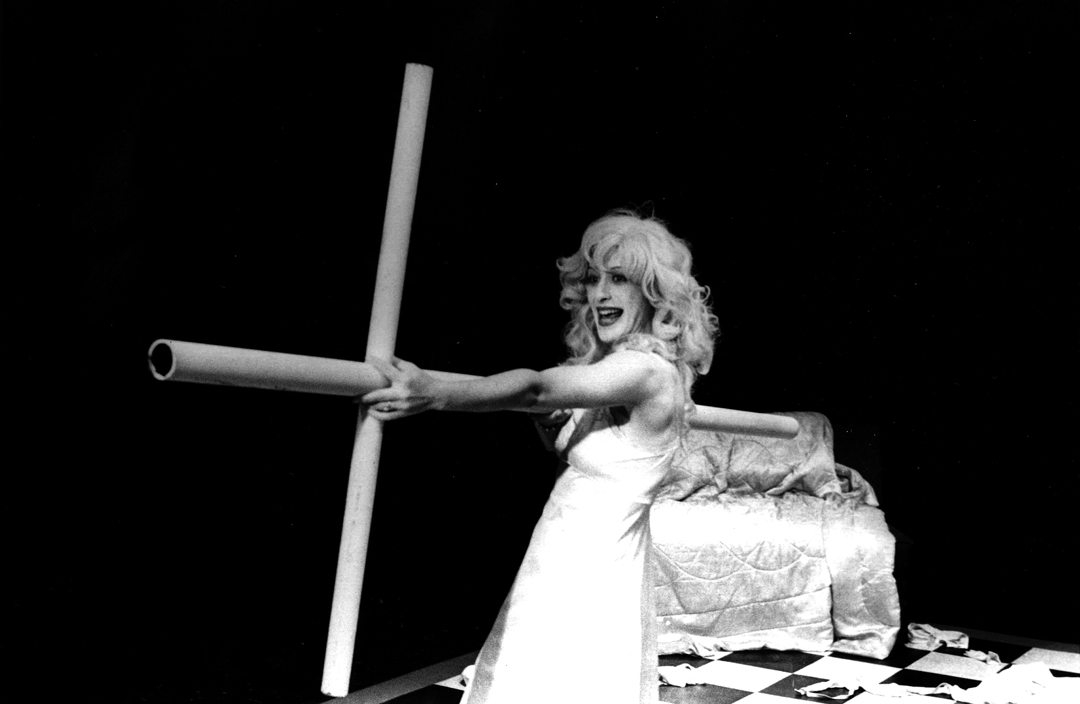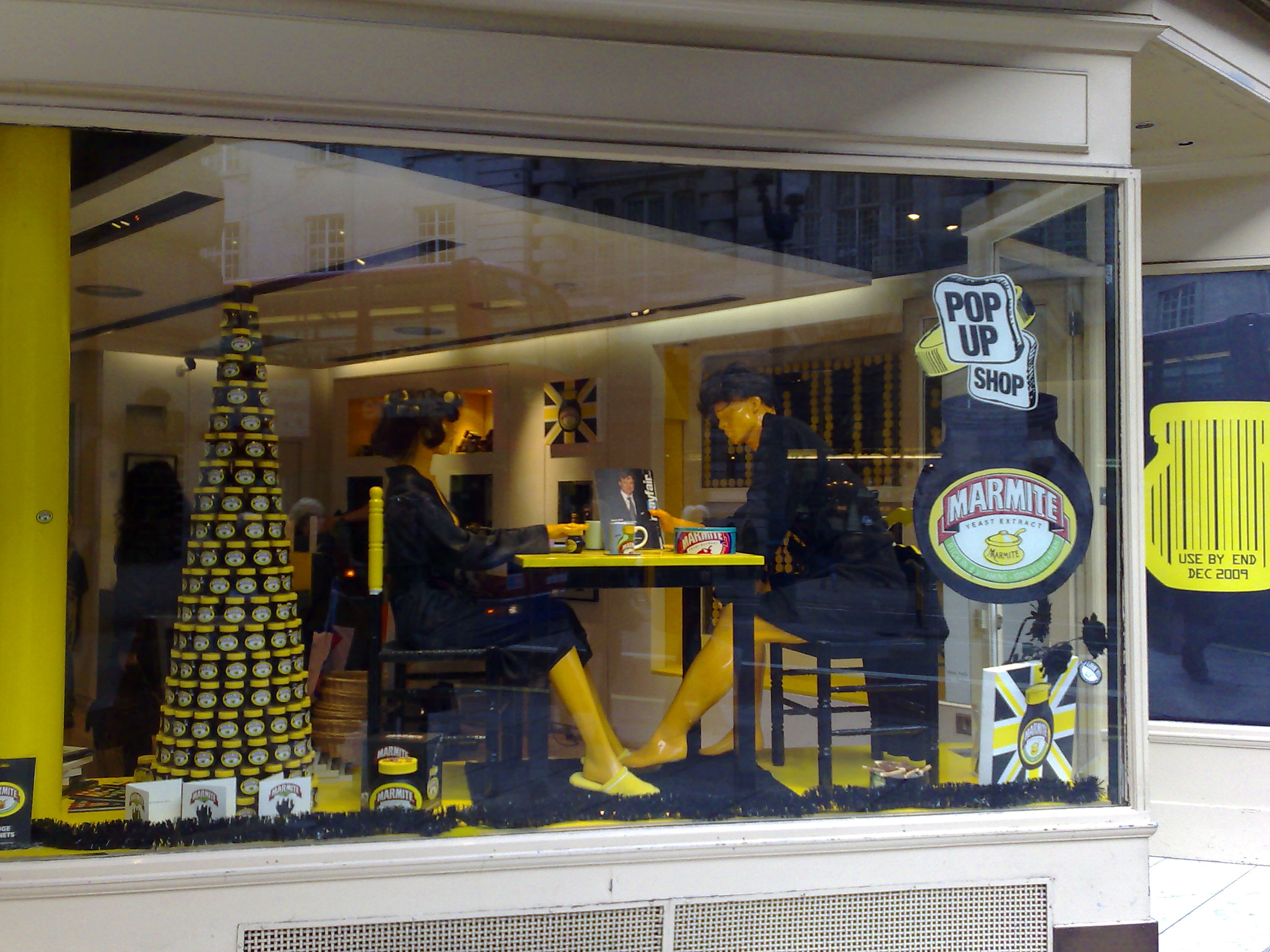|
Dummies Theatre
Dummies Theatre was a Canadian experimental and interdisciplinary contemporary theatre company known for creating free site-specific works and daring productions in vacant stores located in Montreal during the 1990s. History The group was founded in April, 1992 by actors Anna Papadakos, Carlo Alacchi, filmmaker Pascal Maeder and soundman Dave Ballard for the production of the original play ''Dummies in the Window''. The production took place in the vacant store below Papadakos and Maeder’s apartment on Montreal's Boulevard Saint-Laurent. The actors commissioned installation artist Pierre Allard to create a storefront display. While the artist was setting up, a falling dummy shattered the glass window and crashed on the sidewalk, missing Montreal Gazette's reporter Albert Nerenberg by only a few feet. Nerenberg wrote an article titled "Crashing Dummies" about the incident that prompted the group to use the term ''Dummies'' for their play title and theatre name. With no money to ... [...More Info...] [...Related Items...] OR: [Wikipedia] [Google] [Baidu] |
Experimental Theatre
Experimental theatre (also known as avant-garde theatre), inspired largely by Richard Wagner, Wagner's concept of Gesamtkunstwerk, began in Western theatre in the late 19th century with Alfred Jarry and his Ubu Roi, Ubu plays as a rejection of both the age in particular and, in general, the dominant ways of writing and producing plays. The term has shifted over time as the mainstream theatre world has adopted many forms that were once considered radical. Like other forms of the avant-garde, it was created as a response to a perceived general cultural crisis. Despite different political and formal approaches, all avant-garde theatre opposes bourgeois theatre. It tries to introduce a different use of language and the Human body, body to change the mode of perception and to create a new, more active relation with the audience. Relationships to audience Famed experimental theatre director and playwright Peter Brook describes his task as building "… a necessary theatre, one in which ... [...More Info...] [...Related Items...] OR: [Wikipedia] [Google] [Baidu] |
Go Weast, November 1996
Go, GO, G.O., or Go! may refer to: Arts and entertainment Games and sport * Go (game), a board game for two players * '' Travel Go'' (formerly ''Go – The International Travel Game''), a game based on world travel * Go, the starting position located at the corner of the board in the board game ''Monopoly'' * ''Go'', a 1992 game for the Philips CD-i video game system * ''Go'', a large straw battering ram used in the Korean sport of Gossaum * Go!, a label under which U.S. Gold published ZX Spectrum games * Go route, a pattern run in American football * ''Go'' series, a turn-based, puzzle video game series by Square Enix, based on various Square Enix franchises * '' Counter-Strike: Global Offensive'' (''CS:GO''), a first-person shooter developed by Valve * ''Pokémon Go'', an augmented reality game Film * ''Go'' (1999 film), American film * ''Go'' (2001 film), a Japanese film * ''Go'' (2007 film), a Bollywood film * ''Go Karts'' (film), an Australian film also titled as ''Go ... [...More Info...] [...Related Items...] OR: [Wikipedia] [Google] [Baidu] |
Theatre In Montreal
Theatre or theater is a collaborative form of performing art that uses live performers, usually actors or actresses, to present the experience of a real or imagined event before a live audience in a specific place, often a stage. The performers may communicate this experience to the audience through combinations of gesture, speech, song, music, and dance. Elements of art, such as painted scenery and stagecraft such as lighting are used to enhance the physicality, presence and immediacy of the experience. The specific place of the performance is also named by the word "theatre" as derived from the Ancient Greek θέατρον (théatron, "a place for viewing"), itself from θεάομαι (theáomai, "to see", "to watch", "to observe"). Modern Western theatre comes, in large measure, from the theatre of ancient Greece, from which it borrows technical terminology, classification into genres, and many of its themes, stock characters, and plot elements. Theatre artist Patrice Pavi ... [...More Info...] [...Related Items...] OR: [Wikipedia] [Google] [Baidu] |
Theatre Companies In Quebec
Theatre or theater is a collaborative form of performing art that uses live performers, usually actors or actresses, to present the experience of a real or imagined event before a live audience in a specific place, often a stage. The performers may communicate this experience to the audience through combinations of gesture, speech, song, music, and dance. Elements of art, such as painted scenery and stagecraft such as lighting are used to enhance the physicality, presence and immediacy of the experience. The specific place of the performance is also named by the word "theatre" as derived from the Ancient Greek θέατρον (théatron, "a place for viewing"), itself from θεάομαι (theáomai, "to see", "to watch", "to observe"). Modern Western theatre comes, in large measure, from the theatre of ancient Greece, from which it borrows technical terminology, classification into genres, and many of its themes, stock characters, and plot elements. Theatre artist Patrice Pavi ... [...More Info...] [...Related Items...] OR: [Wikipedia] [Google] [Baidu] |
Canadian Artist Groups And Collectives
Canadians (french: Canadiens) are people identified with the country of Canada. This connection may be residential, legal, historical or cultural. For most Canadians, many (or all) of these connections exist and are collectively the source of their being ''Canadian''. Canada is a multilingual and multicultural society home to people of groups of many different ethnic, religious, and national origins, with the majority of the population made up of Old World immigrants and their descendants. Following the initial period of French and then the much larger British colonization, different waves (or peaks) of immigration and settlement of non-indigenous peoples took place over the course of nearly two centuries and continue today. Elements of Indigenous, French, British, and more recent immigrant customs, languages, and religions have combined to form the culture of Canada, and thus a Canadian identity. Canada has also been strongly influenced by its linguistic, geographic, and e ... [...More Info...] [...Related Items...] OR: [Wikipedia] [Google] [Baidu] |
Montreal Gazette
The ''Montreal Gazette'', formerly titled ''The Gazette'', is the only English-language daily newspaper published in Montreal, Quebec, Canada. Three other daily English-language newspapers shuttered at various times during the second half of the 20th century. It is one of the French-speaking province's last two English-language dailies; the other is the ''Sherbrooke Record'', which serves the anglophone community in Sherbrooke and the Eastern Townships southeast of Montreal. Founded in 1778 by Fleury Mesplet, ''The Gazette'' is Quebec's oldest daily newspaper and Canada's oldest daily newspaper still in publication. The oldest newspaper overall is the English-language ''Quebec Chronicle-Telegraph'', which was established in 1764 and is published weekly. History Fleury Mesplet founded a French-language weekly newspaper called ''La Gazette du commerce et littéraire, pour la ville et district de Montréal'' on June 3, 1778. It was the first entirely French-language newspaper i ... [...More Info...] [...Related Items...] OR: [Wikipedia] [Google] [Baidu] |
Cybernetic Art
Cybernetic art is contemporary art that builds upon the legacy of cybernetics, where feedback involved in the work takes precedence over traditional aesthetic and material concerns. The relationship between cybernetics and art can be summarised in three ways: cybernetics can be used to study art, to create works of art or may itself be regarded as an art form in its own right. History Nicolas Schöffer's ''CYSP I'' (1956) was perhaps the first artwork to explicitly employ cybernetic principles (CYSP is an acronym that joins the first two letters of the words "CYbernetic" and "SPatiodynamic"). The artist Roy Ascott elaborated an extensive theory of cybernetic art in "Behaviourist Art and the Cybernetic Vision" (Cybernetica, Journal of the International Association for Cybernetics (Namur), Volume IX, No.4, 1966; Volume X No.1, 1967) and in "The Cybernetic Stance: My Process and Purpose" (Leonardo Vol 1, No 2, 1968). Art historian Edward A. Shanken has written about the history of art ... [...More Info...] [...Related Items...] OR: [Wikipedia] [Google] [Baidu] |
Transmedia Storytelling
Transmedia storytelling (also known as transmedia narrative or multiplatform storytelling) is the technique of telling a single story or story experience across multiple platforms and formats using current digital technologies. From a production standpoint, transmedia storytelling involves creating content that engages an audience using various techniques to permeate their daily lives. In order to achieve this engagement, a transmedia production will develop stories across multiple forms of media in order to deliver unique pieces of content in each channel. Importantly, these pieces of content are not only linked together (overtly or subtly), but are in narrative synchronization with each other. History Transmedia storytelling can be related to the concepts of semiotics and narratology. Semiotics is the "science of signs" and a discipline concerned with sense production and interpretation processes. Narratology looks at how structure and function factor into narrative with rega ... [...More Info...] [...Related Items...] OR: [Wikipedia] [Google] [Baidu] |
Pop Up Store
Pop-up retail, also known as pop-up store (pop-up shop in the UK, Australia and Ireland) or flash retailing, is a trend of opening short-term sales spaces that last for days to weeks before closing down, often to catch onto a fad or scheduled event. The modern trend of pop-up retail started in Los Angeles in the late 1990s, and went on to become popular internationally. Pop-up retail was an increasing factor during the retail apocalypse of the 2010s, including seasonal Halloween retailers who operate stores in vacant spaces during the season. In 2018 the pop-up industry was estimated to be worth $50 billion. History Temporary retail establishments date at least to the Vienna December market in 1298 and the European Christmas markets that followed. Seasonal farmer's markets, holiday fireworks stands, Halloween costume shops, consumer expos, and event-specific concessions are other examples of temporary retailing. The Ritual Expo was one of the first iterations of the modern ... [...More Info...] [...Related Items...] OR: [Wikipedia] [Google] [Baidu] |
16mm
16 mm film is a historically popular and economical gauge of film. 16 mm refers to the width of the film (about inch); other common film gauges include 8 and 35 mm. It is generally used for non-theatrical (e.g., industrial, educational, televisual) film-making, or for low-budget motion pictures. It also existed as a popular amateur or home movie-making format for several decades, alongside 8 mm film and later Super 8 film. Eastman Kodak released the first 16 mm "outfit" in 1923, consisting of a camera, projector, tripod, screen and splicer, for US$335 (). RCA-Victor introduced a 16 mm sound movie projector in 1932, and developed an optical sound-on-film 16 mm camera, released in 1935. History Eastman Kodak introduced 16 mm film in 1923, as a less expensive alternative to 35 mm film for amateurs. The same year the Victor Animatograph Corporation started producing their own 16 mm cameras and projectors. During the 1920s, the fo ... [...More Info...] [...Related Items...] OR: [Wikipedia] [Google] [Baidu] |
Early 1990s Recession
The early 1990s recession describes the period of economic downturn affecting much of the Western world in the early 1990s. The impacts of the recession contributed in part to the 1992 U.S. presidential election victory of Bill Clinton over incumbent president George H. W. Bush. The recession also included the resignation of Canadian prime minister Brian Mulroney, the reduction of active companies by 15% and unemployment up to nearly 20% in Finland, civil disturbances in the United Kingdom and the growth of discount stores in the United States and beyond. Primary factors believed to have led to the recession include the following: restrictive monetary policy enacted by central banks, primarily in response to inflation concerns, the loss of consumer and business confidence as a result of the 1990 oil price shock, the end of the Cold War and the subsequent decrease in defense spending, the savings and loan crisis and a slump in office construction resulting from overbuilding during ... [...More Info...] [...Related Items...] OR: [Wikipedia] [Google] [Baidu] |





